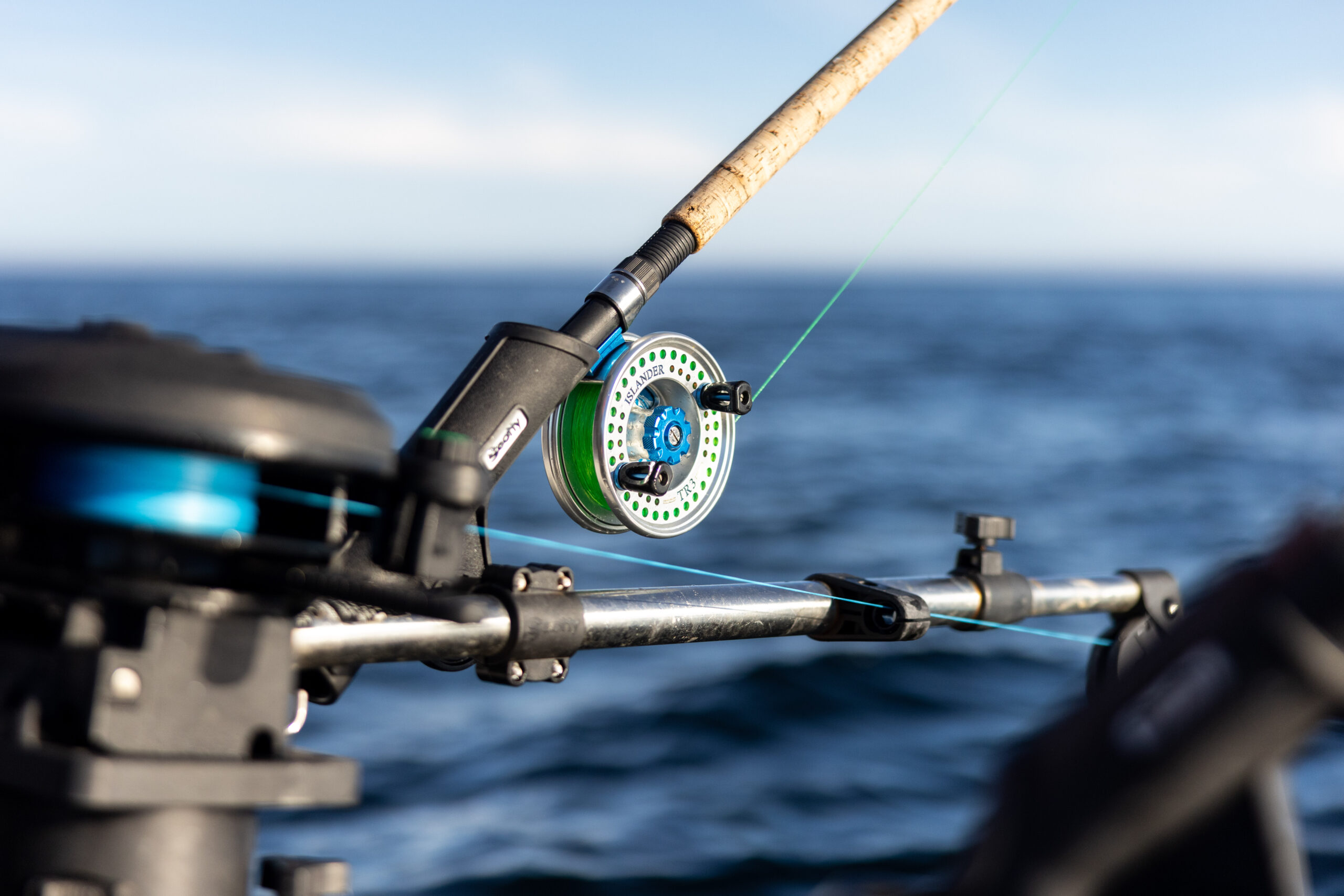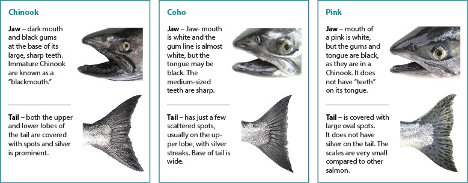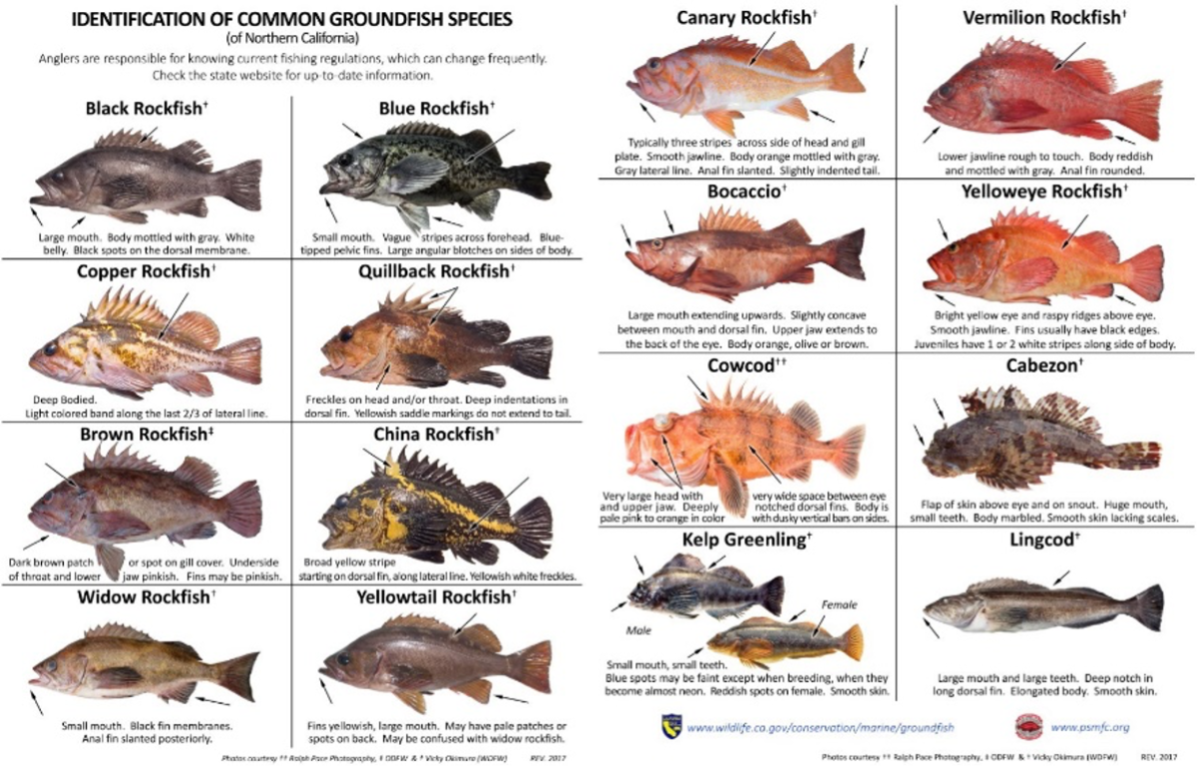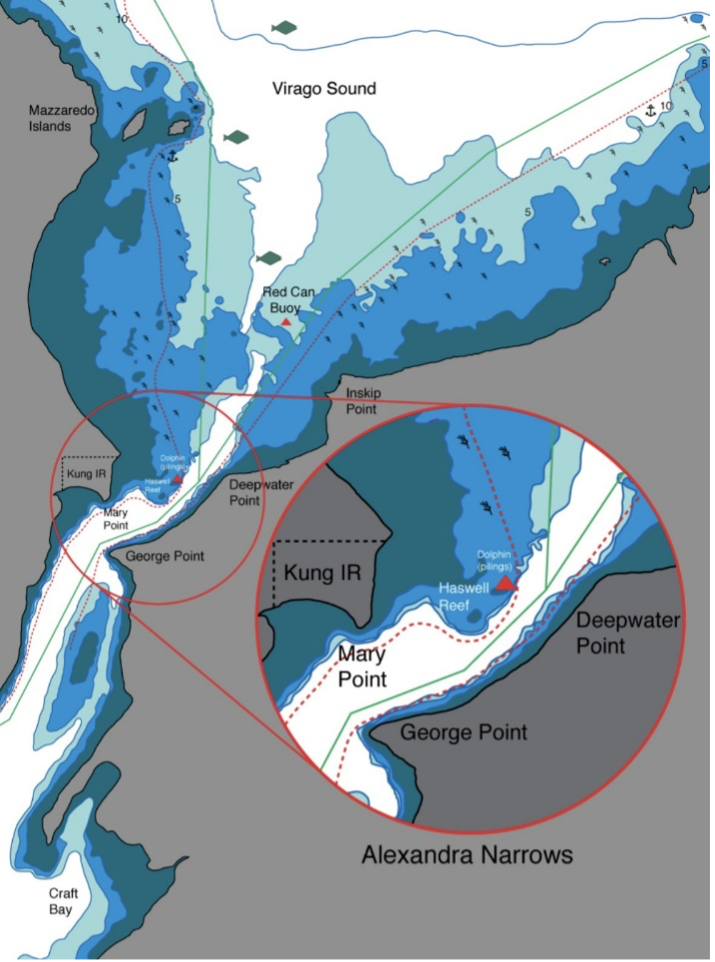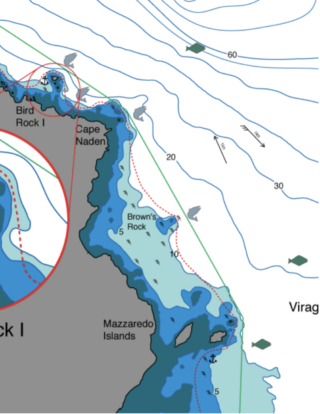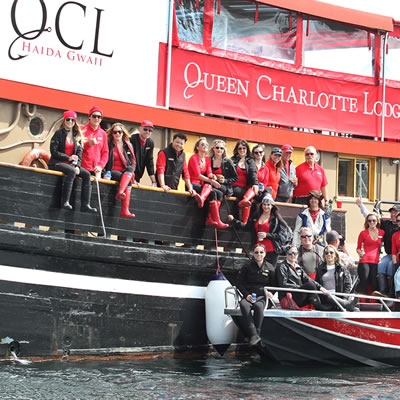Experience Fishing First Class
Angler Orientation
This is where you will find that “need to know” information to prepare you for your fishing adventure! For our self-guided guests, in addition to your Boat Orientation upon arrival, the information included below outlines best practices to ensure your time spent on the water is successful. For our guided guests, we encourage you to familiarize yourself with the information, knowing that it is supplemental to the expertise of your guide.
Should you require any further explanation, do not hesitate to inquire with our Dock team.
All videos are available to download through Youtube Premium.
Self Guides
Upon arrival, our Dock team will walk each self-guided guest through a Boat Orientation. In addition to your Boat Orientation, we encourage you to review the below information and clarify anything you might not be comfortable with before your fishing adventure begins. Don’t worry our team is there to support you throughout your trip and are available both on the Dock and on the water.
After your boat orientation please complete the Acknowledgement of Orientation prior to leaving the Dock.
General Boat Orientation
With a variety of vessel classifications, it is important to familiarize yourself with the specific vessel you find yourself in for the duration of your trip. While each features different styles, the basic information and safety features remain constant.
Each boat is equipped with a VHF marine radio, GPS / depth sounder unit, high-quality Islander mooching reels, a well-stocked tackle box and a detailed area and fishing techniques map.
Watch the below video to review navigation, bait demonstration, the use of a Downrigger, the use a descending device and fish tagging
Essential Knots
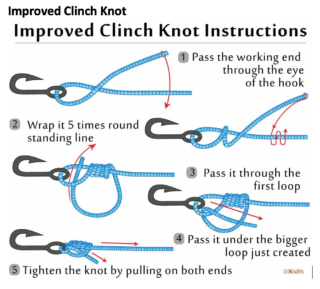
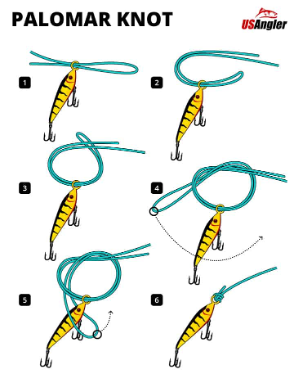
Fishmaster
Serving as our safety vessel on the water, the Fishmaster is the first boat on and off the water to ensure no one is out there unprotected. Available to all guests for gear/equipment assistance to fishing updates, and more.
Radio Use
Each boat is equipped with a marine VHF radio. Radios are intended mainly for safety. You may also use the radios for brief communications with others in your group as well as to communicate with the Fishmaster, the Lodge or the MV Driftwood.
To ensure you do not interfere with other operations or emergency channels, your radio is equipped with two private channels – EXP 06 and EXP 04 – designated for QCL guest use only.
When hailing another boat, use EXP 06. Key the microphone and first state, twice, who you are trying to contact and the boat number (if known). Then state your own name and/or boat number. (ie: Driftwood, Driftwood, this is boat forty-six.)
Repeat if necessary. Once you have contacted the other party, request they meet you on channel EXP 04 to continue the conversation. This leaves EXP 06 open for others to call in the same way.
After each use of the radio, ensure the radio is set back to channel EXP 06, and return the microphone to the small clip located near the radio. Sometimes radio transmissions are difficult to understand – this is often because there is some water trapped in the microphone mouthpiece. If this occurs, try tapping the microphone on your hand a couple of times to clear any water. Please notify the Dock team of any problems you experience with your radio. On the water you can ask the Fishmaster or the Driftwood crew for assistance.
The MV Driftwood
The MV Driftwood serves as our hospitality hub on the water. The Driftwood provides the opportunity for anglers to take a break from fishing to have a warm lunch. The location of the Driftwood is subject to change in different weather conditions. Calling the Fishmaster is always recommended to learn it’s anchorage location.
The Driftwood is open (on days throughout the trip) from 11:00am – 2:00pm, providing fresh, hot lunches to all QCL guests. Menu offerings include a salad bar, classic QCL chili and chowder, burgers and a chef’s daily feature. On arrival day, hours are 12:00pm-3:00pm, altered to allow for all guests to enjoy while maximizing your time on the water. Listen for The Driftwood’s official radio call to signal when the lunch service has begun each day.
Avoid visiting the Driftwood outside of the hours of operation. If you do need to go to the Driftwood outside of the lunch hours, always establish radio contact before attempting to dock.
Licensing, Identification + Regulations
It is important that all anglers are familiar with the species available to them in the fishing grounds and the DFO regulations pertaining to each. It is the sole responsibility of the angler to be familiar with the regulations and to obey all laws. Regulations are subject to change with minimal notice.
Available below and on each boat, are identifiers for each species.
All guests must have a valid BC Tidal Fishing Licence for the duration of their fishing trip.
Salmon
While our fishing grounds offer the opportunity to catch all 5 species of pacific salmon, the three most common are Chinook, Coho and Pink. The chart below explains how to distinguish between them.
Chinook salmon have black gums at the base of their teeth and a dark mouth. They have a flowing V-shaped silvery tail usually covered in spots. Chinook are the largest species of salmon and can range from 16 – 60+ pounds.
Coho salmon have white gums at the base of their teeth. They have a square silver tail with just a few scattered spots on the upper portion. The “wrist” or base of the tail is wide. Typical Coho range in size from 8 – 16 pounds.
Pink salmon have black gums although their mouth is light in colour. They have tiny scales and the V-shaped tail is heavily marked with large oval spots. Pinks are the smallest salmon species averaging 5 – 8 pounds.
The remaining two salmon to identify are Chum and Sockeye.
Chum
- Mouth is white with a white gum line
- Prominent teeth
- No spots on the tail or back
- Large eyes and pointed head
Sockeye
- White mouth and gums
- Almost toothless
- No spots on tail or back
- These fish are normally small
Rockfish
Rockfish can be difficult to identify at times. If you’re unsure, you should always release the fish. A common saying to be safe from regulations mistakes when retaining rockfish is “if it’s not black put it back”. This refers to black rockfish specifically. Black rockfish are the easiest to identify by their all-black profiles and do not have their own regulations outside of normal rockfish retention limits. They are also plentiful, easy to catch and among the tastiest of all the Rockfish!
Fishing Regulations
Your Fishing Licence
- The licence shall be in your possession while fishing and transporting your catch.
- No person shall retain more than a daily limit of any species on one day.
- Daily Limit: The maximum number of a given fish species that a person is allowed to keep in one day.
- Possession Limit: The maximum number of fish you can have in your possession at any given time, except for what is at your ordinary residence.
- Chinook salmon and Halibut must be recorded on your licence immediately upon retention. Recording includes the date, the Fishing Area (in our case it is Area 1) and, for Halibut only, the fork length of the fish.
The Department of Fisheries and Oceans (DFO) puts regulations in place to protect the fish populations. Adherence to the regulations is the responsibility of the individual and those who do not follow them are subject to consequences. Fishing regulations are subject to change without notice. QCL will alert guests to changes that affect them. However, it is the responsibility of the angler to follow all regulations.
Salmon
- 4 Salmon (all species) maximum per-day
- 8 Salmon (all species) maximum per trip
- Of your 4 salmon retained in one day, no more than 2 can be Chinook salmon
- Of your 8 salmon retained on your trip, no more than 4 can be Chinook salmon
Halibut
- 1 Halibut per day – regardless of size
- EITHER 2 Halibut per trip, both measuring UNDER 90cm OR 1 halibut measuring between 90cm and 126cm.
- NO Halibut can exceed 126cm.
Rockfish
- 3 Rockfish per day
- 6 Rockfish per trip
- Of the 3 Rockfish per day, only 1 can be EITHER a China, Quilback, or Tiger Rockfish.
- Of the 6 Rockfish per trip, only 2 can be EITHER a China, Quilback, or Tiger Rockfish.
- ZERO retention of Yellow Eye Rockfish.
Lingcod
- 3 Lingcod per day
- 6 Lingcod per trip
- There are no size restrictions on lingcod in Area 1
Recording Your Catch
Chinook and Halibut must be recorded on the license after being caught, and before the angler can continue fishing. Chinook are to be recorded on the license with the date and the area where the fish was caught; our fishing ground are all encompassed under “AREA 1”
Halibut also need to be recorded with the date, area, and their total length in Centimeters.
Although there is a place on the license for Lingcod to be recorded, this is not required in our grounds.
Navigation
Watch the below video to learn about navigating our fishing grounds, learn about safe routes to the fishing grounds, boating courteously, parking, and navigational hazards. Reference the below charts as needed.
Naden Harbour
There are several navigational hazards to be aware of when traveling to the fishing grounds and keeping a close eye on the boat’s GPS chart is critical for safe navigation. When first leaving the marina, it is important to maintain a significant distance from the shoreline as it shallows quickly.
Alexandra Narrows
Once you reach the narrows, the boat operator MUST stay East of Haswell Reef (displayed in the map below). This reef is normally concealed by a very shallow amount of water, completely hiding it from the eyes of the operator. The large red triangular marker displays the edge of the furthest North point of the reef and should be used as reference for navigation. Favoring the East shoreline is encouraged as the narrows are extremely deep very close to shore, making this the safest route of travel.
Browns Rock
This rock feature is easily avoided by maintaining a wide birth around the major fishing point “Cape Naden” and “The Mazzaredo Islands” but is displayed below for reference. Browns Pile is often hidden subsurface with high tides but is visible on low tides. Avoid traveling close to this area.
Major Fishing Points
When traveling past our major fishing points it is important to keep a lot of distance from the boats that are fishing. Never travel between a boat actively fishing and the shore. It is courteous to leave exaggerated distances from boats that are fishing to avoid scaring any fish and reducing the impact of the boat wake on trolling vessels.
Right Rod to the Rocks
When fishing, the boat with their right had rod closest to the rocks has the right of way. This creates a rotational pattern for all anglers to fish points and allows for fair access to fishing. When turning around to head back in the direction you were just traveling, move the boat to the outer loop of the tack and allow for other boats to have their turn fishing their Right Rod to the Rocks.
Returning to the Dock
Upon return to the dock, park the boat behind the Bellringer where our dockhands will assist you with your fish. Take this opportunity to report any issues to the dockhands you may have experienced with the boat or equipment that day.
NOTE
A valid Pleasure Craft Operator Card or Rental Boat Safety Checklist is required to operate a QCL vessel. Each guest is responsible for their safety on the water. Operate your craft in a responsible manner – you are liable for any damage caused to equipment or property due to gross negligence or failure to follow the instructions and set routes as detailed in the orientation material.
Channel EXP 06 | “On the Water” Operations + Calling
This is the channel that anyone operating on the water or on the dock can be reached. This channel is designated for safety use or for the purpose of establishing radio contact with another vessel. Once another vessel has been hailed, move to channel EXP 04 to continue dialog.
Channel EXP 04 | Limited Conversations
This channel is used short conversations. Should you need to have a conversation with another boat, ask them to go to Channel EXP 04. When not actually communicating on EXP 04, the radio should always be set to channel EXP 06.
Note: EXP 04 is used on land as their Operations & Calling channel. As you approach the lodge while returning, be mindful that you may be heard on land if you use the radio on EXP 04
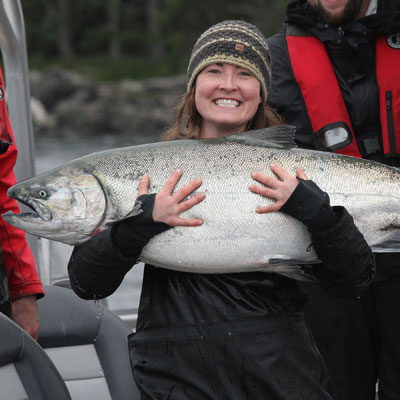
First Class Fishing
First Class Fishing
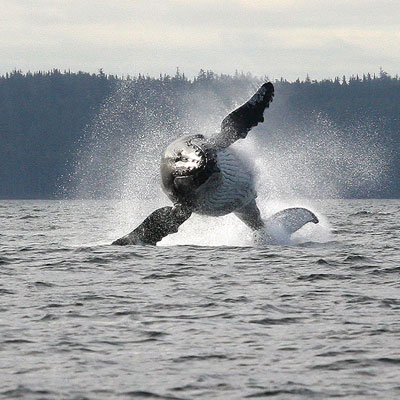
Nature Watching
Nature Watching
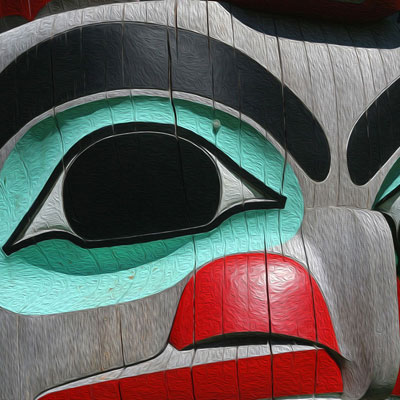
Natural & Cultural History
Natural & Cultural History
This is fishing Disneyland and National Geographic all wrapped in to one. Mind blown. You should go.
~Jordan T. on Facebook

